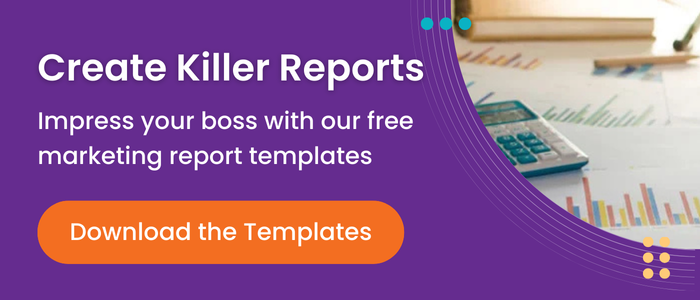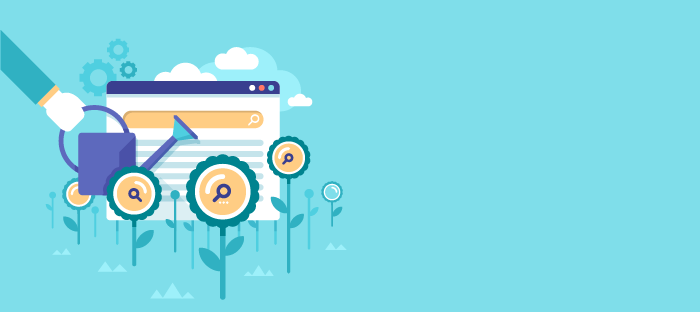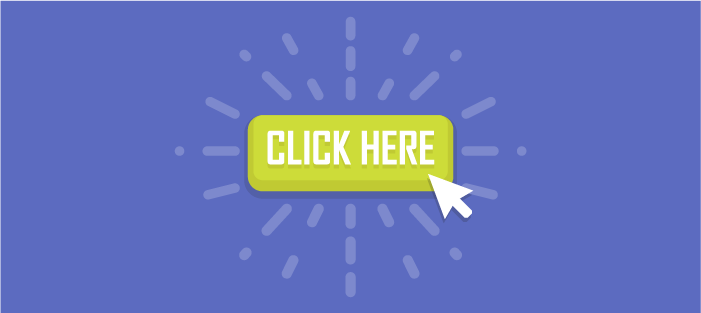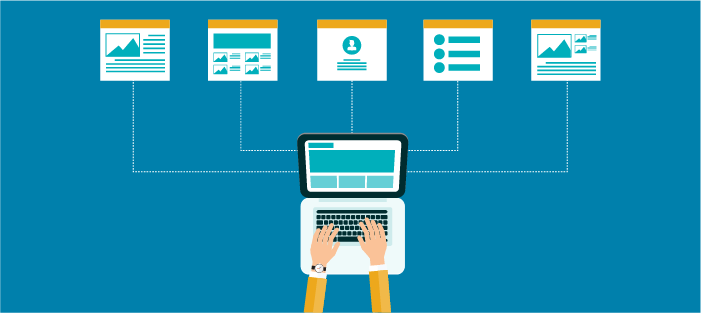Want to Boost Website Conversion Rates? Focus on the Buyer’s Journey
We all know leads are a good thing. Attract enough leads and give them the answers they’re looking for and you can convert them into a steady stream of delighted customers.
But did you know that your website can do a lot of the conversion work for you? The process of converting a lead into a customer is called the buyer’s journey, and it’s often depicted as a funnel.
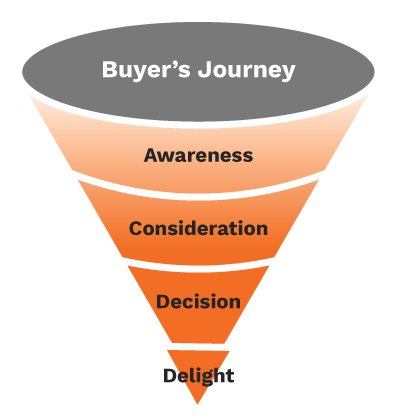
The conversion funnel.
Here’s how the buyer's journey (or conversion funnel) works:
- At the top, potential customers are in what we call the “awareness” stage. These are the people who are just beginning to realize they have a challenge that needs to be solved. The funnel at this stage is wide, reflecting that you might get a variety of people showing interest at this point. Customers in this stage need to be educated in big-picture terms about their challenges and potential solutions.
- In the middle, the funnel narrows as potential customers move into the “consideration” stage. As people learn more about possible solutions to their problems, some won’t be a good fit and others will lose interest. The ones who’ve stuck around are busy considering their alternatives. These customers need help comparing your products and services to the competition so they can accurately weigh their options.
- At the bottom, the funnel continues to narrow as potential customers leave. Great news – the ones who remain are likely a fantastic fit and are ready to be wined and dined! This is called the purchase or “decision” stage.
- Finally, the “delight” stage is what happens after a lead becomes a customer. The idea here is that to retain clients, you need to keep them happy – and it’s still part of the buyer’s journey.
Related Content: The 4 Stages of the Inbound Marketing Funnel
But, how does the buyer's journey apply to my website?
For years, both sales and marketing have used the concept of funnel marketing for lead conversion. But inbound marketers often struggle to leverage the conversion funnel on their websites – which is unfortunate, because almost half of the marketing budgets for small- to mid-sized businesses are dedicated to their websites, according to this report.
The truth is, your website represents a tremendous opportunity to take advantage of the benefits of funnel marketing.
How to tell if your website is NOT a funnel
Let’s look at how the typical website does not function like a funnel.
In the early years, websites were almost like brochures: They offered a few pages that described their services and told a visitor how to get in touch, perhaps with a contact form.
These days, many websites have progressed beyond this basic level. Websites now might include a blog, high-value content assets like whitepapers and maybe even a video describing their company. Some might be connected to their company’s social media profiles.
All of this is helpful. But if a website doesn’t help visitors progress through the conversion funnel, is it working as hard as it could?
To find out if your website is a funnel, ask yourself these questions:
- Does the home page content change based on whether a person is visiting your site for the first time or the 10th?
- Is it clear what next step visitors should take on each page?
- Do you know how many times a particular person has visited your site? Do you know what type of content they’re consuming?
- Are you sending emails with targeted follow-up content, based on the way the person has interacted with your site?
- When people post to your Facebook or Twitter accounts, do you know who these people are and whether they’ve read your website?
- Does the sales team get on the phone with a lead only after they know that the lead has visited your site, downloaded assets and requested quotes?
If you answered no to some or all of these questions, your website, unfortunately, is not a funnel. But it can be! Let’s take a look at what a website with a built-in conversion funnel can do for your business.
What a funnel-shaped website does differently
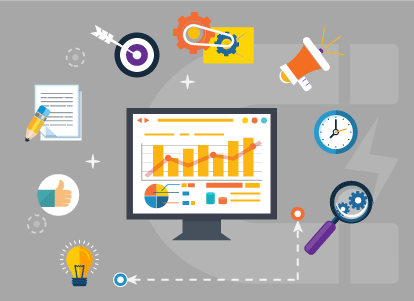
One major reason funnel-shaped websites are more successful at moving leads through the buyer’s journey is that they treat each visitor differently. Because funnel marketing clarifies what each buyer is looking for at each stage of the buying process, you can supply highly targeted, very precise help that speaks exactly to what that buyer needs.
In other words, funnel marketing allows you to treat potential customers like real people who want genuine help and guidance, not blatant sales pitches.
If you want to apply the conversion funnel to your website, you need a platform that allows you to treat every visitor as an individual. This software should allow you to gather details on these visitors and monitor their interactions, so that you can gain clues about how to move them, respectfully, through the funnel.
Although it sounds like a lot to ask of your website, it can be done!
Here’s what a funnel-shaped website does:
- Continually attracts new visitors to fill the top of the funnel
- Generates new leads and improves website conversion rates
- Integrates with your contacts and sales software so you can keep track of every detail about your visitor
- Delivers personalized content on web pages, forms and calls-to-action
- Automates processes for sending emails and other communications based on whether the user has downloaded a content asset or filled out a form
- Features tie-ins with social media platforms that alert you when a frequent website visitor is interacting with you on social media
- Sends internal notifications letting you know when a lead is ready for a sales call
With a funnel-shaped website, lead conversion takes less effort and far less guesswork.
And even better, it gives targeted help to your potential customer, answering their specific questions and offering solutions to their particular challenges. This is a tremendous value for the client, and it allows you to be fully engaged with each potential customer throughout the entire journey. You learn more about your leads, and they feel they’re “being heard.”
It doesn’t get much better than when kicking off a long relationship with a delighted customer.
If you want to maximize your results at every stage of your funnel, you need to measure what you're doing. Download our free Marketing Report Template for access to the same monthly and quarterly reports we use with our clients to prove the ROI of our work.


